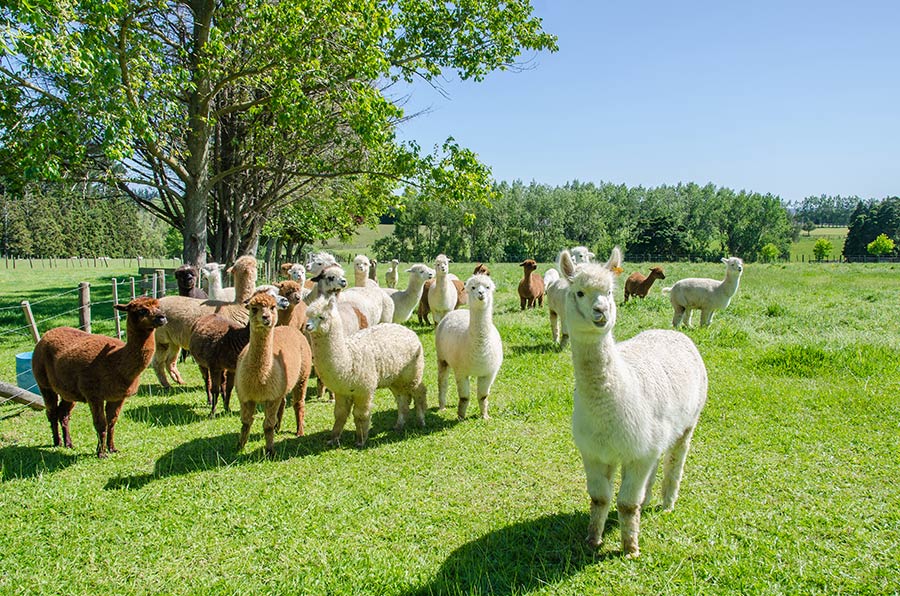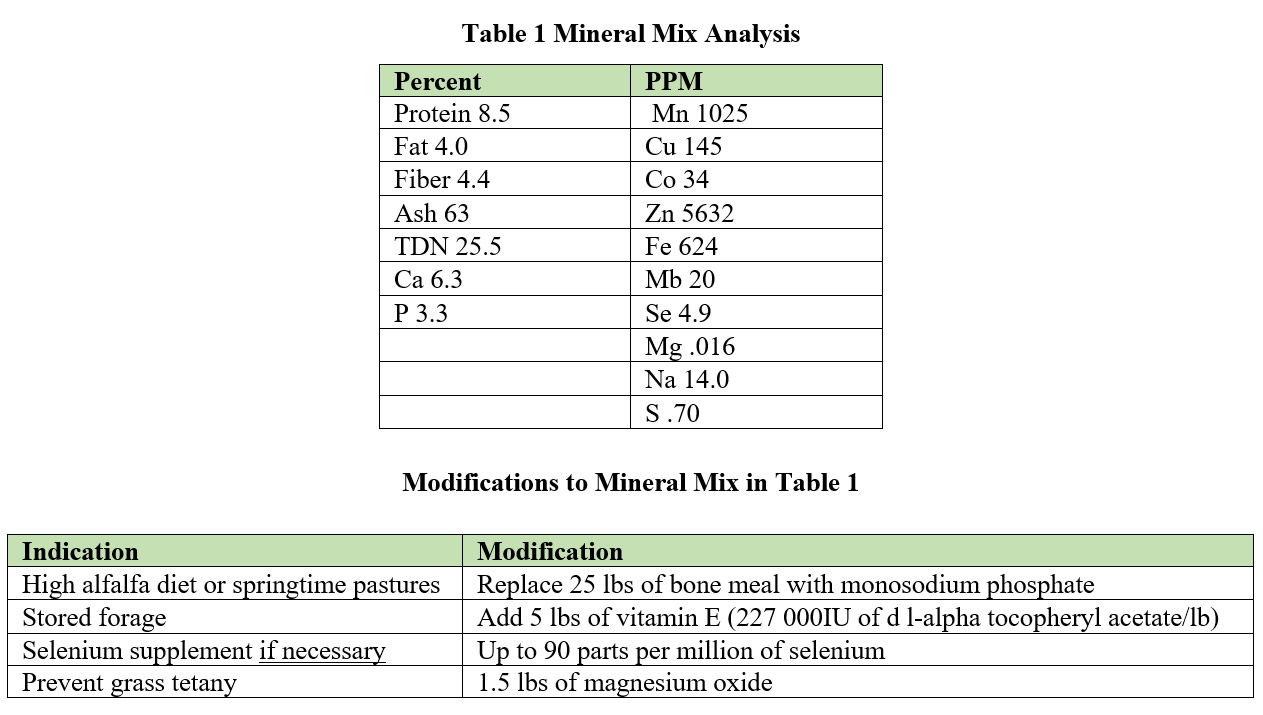Alpaca Applied Nutrition

LaRue W. Johnson, DVM, PhD
Conference Presentation, circa 1999/2000
Hypothetical alpaca farm is 11 head with 4 brood females (due October/November), 1 stud, 3 weanlings, and 3 fiber geldings
Question: Can I feed them all the same?
Answer:
No! They have different nutritional needs depending on a variety of factors:
Growth - weanlings and one young female
Late gestation - 4 brood females
Work (i.e. packing) -probably none
Stud - how much servicing?
Geldings - how much fiber production?
Question: Is there something I can feed all of them?
Answer:
Yes, forage (pasture/hay)
Question: How much?
Answer:
This depends on the frame size plus body weight and/or body condition of each individual plus the existing weather conditions.
Question: What do you mean by frame size?
Answer:
This is a subjective scoring of how big the basic skeleton of your alpaca is (e.g. 1 (small), 2 (medium), 3 (large), 4 (extra-large).
Question: How does frame size relate to body weight or body condition?
Answer:
Frame size relates best to body weight, where we might speculate that normal body weight for the various frame size to be:
| Adult Frame Size | Body Weight |
|---|---|
| 1 | 135-145 lbs |
| 2 | 150-170 lbs |
| 3 | 175-195 lbs |
| 4 | 200-210 lbs |
Bone structure (fine-->med-->heavy) will influence this weight range. Intact males tend to be lighter.
Question: And then what about body condition?
Answer:
Body Condition can be determined without body frame size considerations and in lieu of body weight.
Question: How do you go about it?
Answer:
Establish a subjective scoring system of from 1-10 with 1 being very THIN, 10 being very FAT, and 5 being ideal. Then palpate some key body locations.
- I palpate the loin region for slope of muscle and firmness. Generally I have a pretty good idea from this site if the animal is 5 OR LESS.
- I palpate the fiberless area behind the point of the elbow (being careful not to touch the leg).
- The relative ease of rib palpation will confirm my 5 OR LESS score. If the ribs are difficult to feel and the loin area was soft and bulging, we are looking at a 6 OR GREATER.
- To separate the upper scores, I then look between the rear legs and at the brisket region for degree of bulging. Furthermore, some of the fatter females will have gobs of fat in the perineal region adjacent to the vulva. It is important to do your scoring in that order as one can be deceived by some extremely muscular breeding males bulging with muscles between their legs that actually may have a body score of 4or 5.
- DO NOT make your decisions based on palpating over the pelvis as even fat alpacas will have thin skin, light musculature and little fat cover at that site making the pelvic bones readily palpable.
Question: Having body scored all of my alpacas, now what?
Answer:
First, you have some gender/age groups to initially create feeding groups as they all can't cohabitate (e.g. studs, 3 older brood females, etc. Then, using body scores you may have to further divide them with all the truly fat alpacas (7 or greater) to be fed separately from the normal (5-6) alpacas and the thin (4 or less).
Question: Isn't this getting awfully complicated?
Answer:
Yes. So you really want to prevent a wide disparity of body condition in your herd. Dominance/subordinance can be another confounding factor.
Question: So how much forage do I feed the various individuals/groups?
Answer:
Without knowing their body weights we can't be sure, but essentially, the growing, lower body scored individuals can have free choice hay/pasture and possibly some supplement of grain depending on low body score and weather.
The normal/ideal individuals should be limit-fed such that they clean up everything or have restricted pasture feeding with no concentrate (grain). During cold weather (when they are below their critical temperature zone - not established in alpacas but somewhere below freezing and influenced by wind chill). During cold weather, we can offer free choice forage and possibly some concentrate (grain).
The fat animals should be severely restricted, with no more than they will clean up after two hours or limit their pasture to three hours of grazing. Thereafter, they should be in a dry lot, absolutely no grain!
Question: If I was able to weigh my alpacas, could we be more exact?
Answer:
It would be a distinct advantage to have both weights and body score information. You would create the groups by body score and then feed by percent of body weight according to maintenance and additional needs.
For example: A normal frame size 3, 180 lb, body score 5 alpaca is offered 1% of body weight in dry matter (DM) forage to cover maintenance. 180x.01 = 1.8 lbs. Since most hays will average 90% DM we must correct for this by: 1.8/.90= 2.0 lb of hay as fed/day.
For example: A thin (<4 body score) alpaca can be offered free choice forage and will consume 1.8-2.0% of body weight or for the same theoretical 180 lb alpaca (frame size 3) - 3.6-4.0 lbs of hay as fed/day. For example: A fat (body weight of 210, frame size 2 and body score> 6) alpaca can be offered 1% or less of targeted body weight (180 lb alpaca with body frame size 3) = 2 lb of hay as fed or less to effect.
Question: Is all forage/hay the same?
Answer:
Absolutely not! There are a lot of differences when one compares hays such as alfalfa, the grasses (timothy, orchard, brome, fescue) and straw, or even corn stalks.
Question: What are the important differences?
Answer:
Principally, the protein, energy, fiber, calcium and phosphorus levels.
Question: How do you find these out?
Answer:
The ballpark values can be looked up in an NRC table, but the values for a forage at hand are best analyzed after proper sampling.
Question: How is proper sampling done?
Answer:
Ideally this is done by core sampling of stacked bales where 6-10 core samples are taken, mixed and submitted for analysis. Or, in the case of pasture, samples should be pluck gathered, mixed and submitted during the various seasons of the growing season.
Question: Where do we send them?
Answer: This section updated October 2021
Servi-Tech Laboratories – several locations; check the website www.servitech.com
Check with your local extension office.
Question: What about minerals?
Answer:
Free choice minerals should be available at all times. The basic formula outlined below is available commercially. It should be the only source of salt and mineral available.
Camelid mineral supplement: 50# trace-mineral salt, 50# steamed bone meal, 50# dry powdered molasses, 10# "Zinpro 100"
Table 1 Mineral Mix Analysis
Like this article? Become a RMLA Member today!



